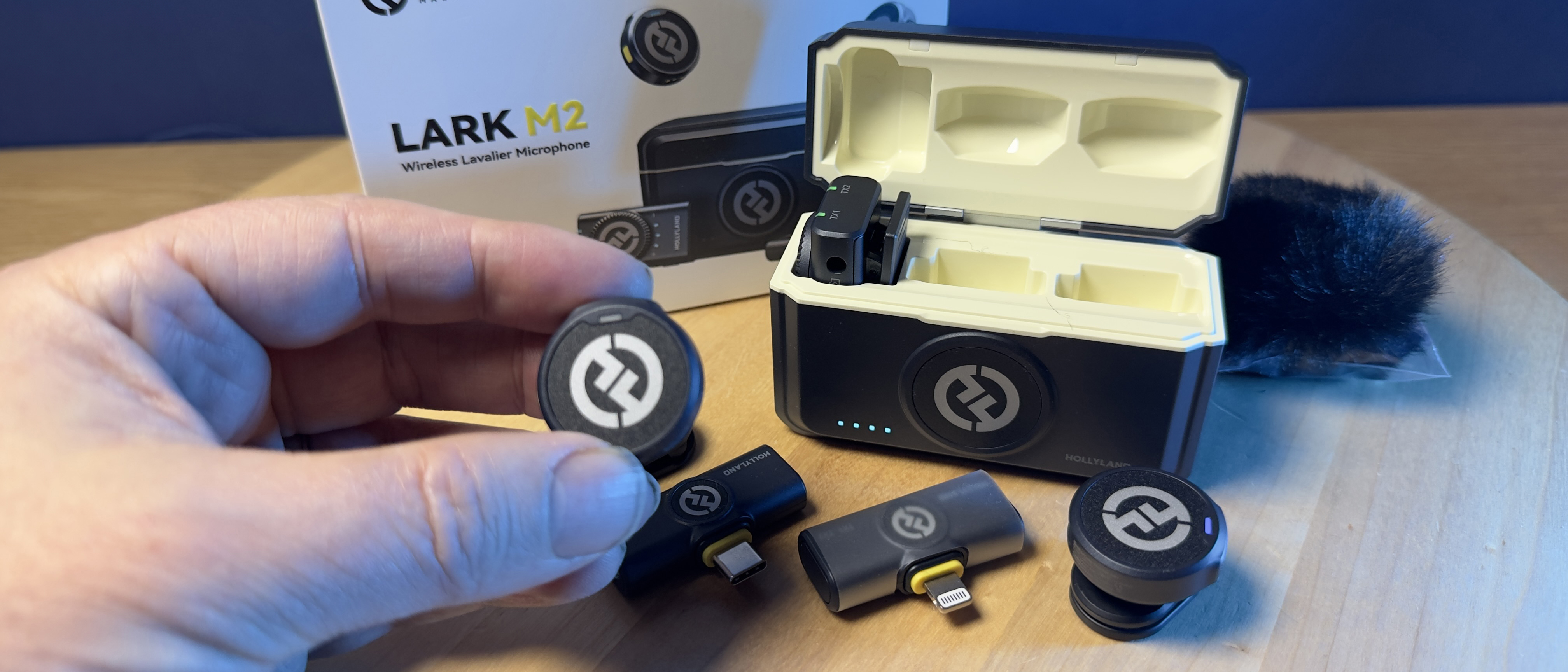Digital Camera World Verdict
The Lark M2 will be available to purchase from January 10 2024. If you’re a smartphone user then your new year resolution should be to track one down, especially if you want to record hi-quality audio when your smartphone is mounted on a gimbal.
Pros
- +
Discrete transmitters
- +
Works straight from the box
- +
Magnetic attachment
- +
Long transmission distance
- +
Suits Android, iPhone or camera
Cons
- -
No onboard recording feature
- -
Could do with spare magnets
Why you can trust Digital Camera World
In recent years Hollyland has been prolific when it comes to creating wireless mic kits for a range of cameras. At the end of 2020, they introduced the Lark 150 which featured an innovatively designed charging case that powered two clip-on wireless mics and a receiver that you could attach to a camera. The lighter and improved Lark M1 followed 6 months later in 2022 and we were very impressed with its performance.
Just over a year and a half (and a couple of other Lark models) later Hollyland has unveiled the Lark M2, which like its Lark M1 predecessor contains two transmitters with a built-in mic and a receiver that you can attach to your camera. However, the Lark M2 looks a lot different to the M1 and has some extra tricks up its sleeve as we’ll explain.
Transmitter -
Dimensions: 10 x 30 mm
Net Weight: 9g
Max SPL: 115 dB
Pick-up Pattern: Omnidirectional
Signal to Noise Ratio: 70 dB
Battery Life: 10 hours
Max Distance: 300m
Onboard recording: No
Receiver -
Dimensions: 30×20x20 mm
Net Weight: 6g
Max Distance: 300m
Screen Type: None
Battery Life: 10 hours
We got hold of the Lark M2 Combo Kit which contains two transmitter mics and a collection of receivers. Typical receivers in other mic kits that we’ve reviewed have a 3.5mm jack output socket that enables you to connect the receiver via a TRS to TRS cable to a camera’s 3.5mm input jack.
However, if you need to connect the receiver of many wireless kits to a smartphone then you need to buy a third-party 3.5mm jack to USB-C or Lightning adaptor. Conveniently, the Lark M2 Combo Kit has two mini receivers that have a lighting or USB-C connector built into them so you can plug them straight into an Android or Apple smartphone without the need for a trailing cable. The Combo kit also ships with a more traditionally designed receiver that you can connect via cable to a DSLR or mirrorless camera.
A major key feature of the Lark M2’s two transmitters is that they are tiny and light (weighing in at a mere 9g). Compare this to the hefty (but similarly shaped) transmitters of the Saramonic Blink Me which are much heavier at 30g and can cause clothing to snag. Like the Blink Me, the Lark M2’s transmitters are button-shaped and attach to your subject by placing a magnet behind inside clothing. The M2 also ships with a magnetic pendant which makes it an easy matter to attach the mic to your subject.
Despite their small size, the Lark M2’s two transmitter mics produce great-sounding 48kHz/24-bit Hi-Fi audio. They also have a noise cancellation button that effectively reduces unwanted background sounds without compromising the sound quality.
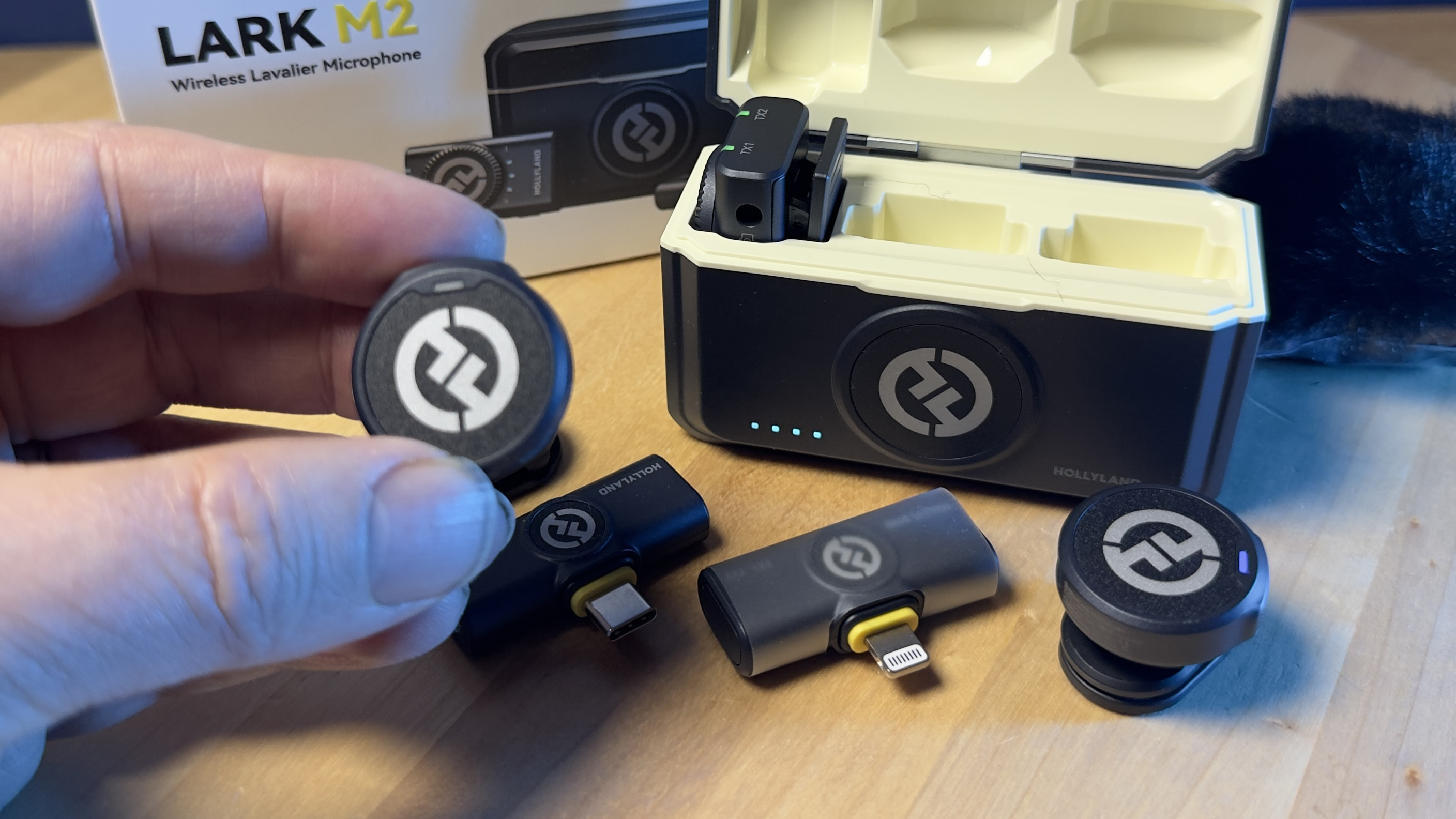
Hollyland Lark M2: Design & Handling
The plastic Lark M2 transmitters and receiver are stored in a plastic charging case. You can charge each device simultaneously by plugging a USB-C charging cable into the rear of the case. Before using the kit you need to remove bits of blue tape that protect the mics and their connectors in transit. The transmitter mics are so small that they only have one button (which activates noise cancellation).
However, by using the LarkSound app you can set each mic’s Volume (or input level) from Low through Medium to High. You can also use the app to make the mic apply a strong or weak noise cancellation algorithm. We used the strong setting and our voice sounded fine (without sounding thin or tinny like it did when using noise reduction on the Godox WEC.
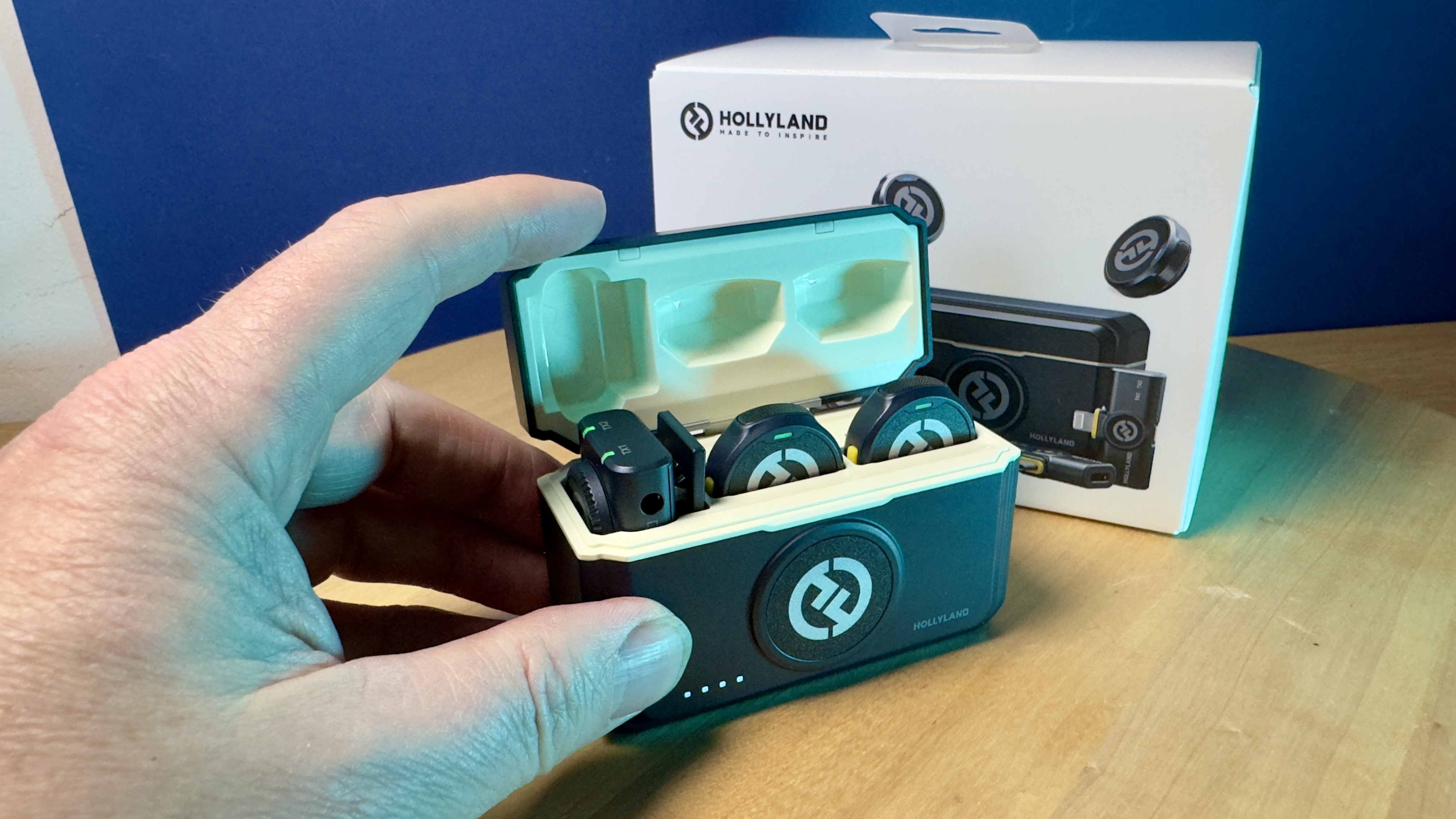
The LarkSound app is also handy for checking the sound levels of each mic using a classic sound level indicator that shows unwanted peaking in red and healthy levels in green. Every component in the Lark M2 is nicely branded with the circular Hollyland logo including the volume dial on the larger camera-compatible reciever. This dial enables you to adjust the sound levels going into the camera via the receiver (instead of having to use the LarkSound app when using the smaller USB-C or Lighting smartphone receivers that ship with the Combo Kit).
The charging case and all the accessories can be carried in a supplied drawstring bag for easy transport. There are two magnets that secure each mic to a subject from behind their shirt, plus two more magnetic mounts that attach to a belt clip. There’s also a magnetic pendant that you can wear over your neck and clip a mic to that with ease. When attaching a magnet to a mic I was able to walk and talk without them becoming detached.
However, when I unclipped the mic from its magnet I dropped the magnet inside my shirt and had to rummage around for it. It’s possible that magnets could get lost on location so it would be nice to have some extra magnets thrown in (as is the case with the Saramonic Blink Me kit.)
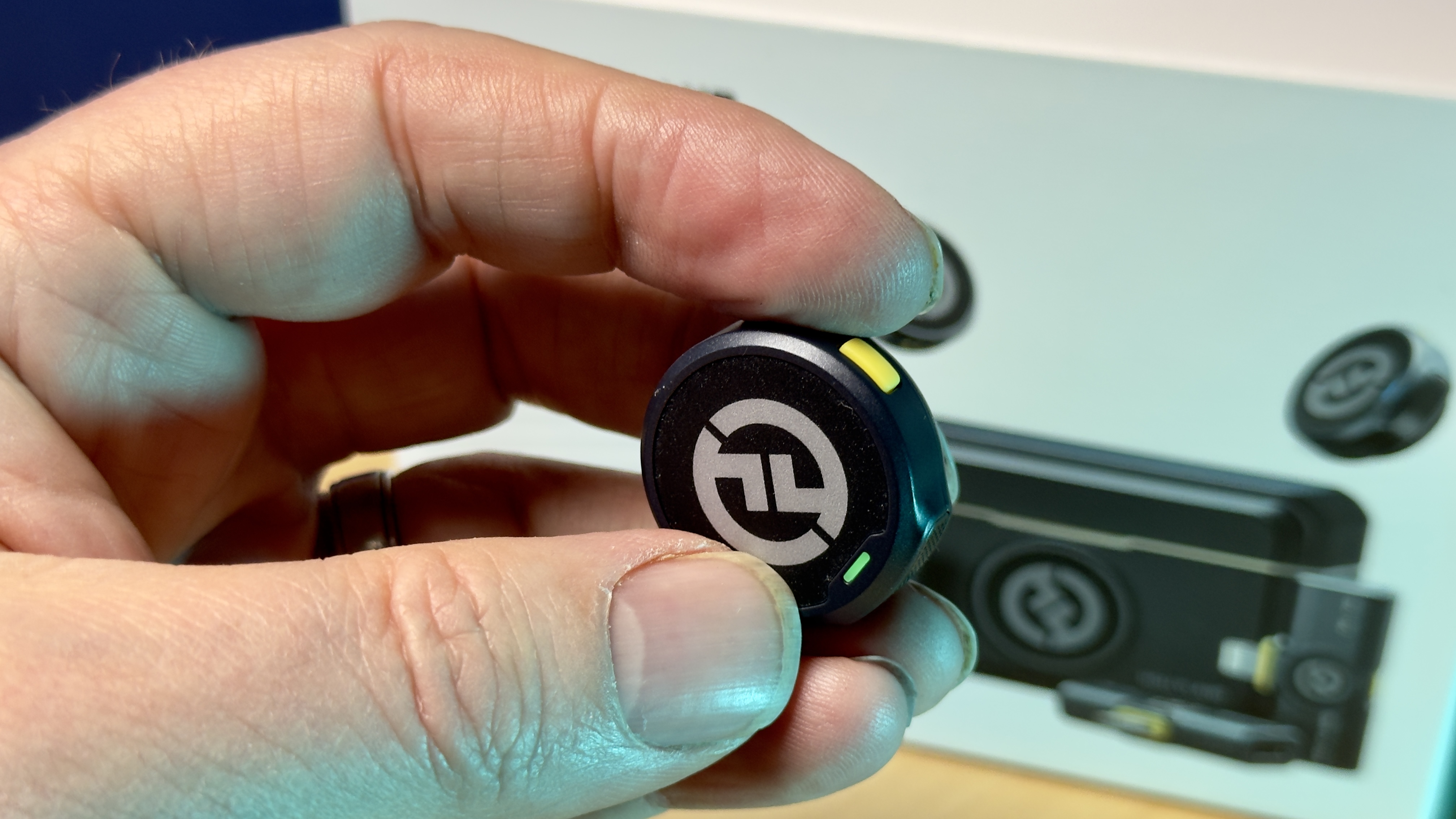
Hollyland Lark M2: Performance
As well as featuring small button-shaped mic transmitters the Lark M2 Combo Kit boasts the smallest receiver that we’ve encountered on a wireless mic kit. The receiver plugs straight into your smartphone so there are no dangling connecting cables to snag on a gimbal’s tilt, pan, and roll arms. The DJI Mic’s receiver also plugs straight into your smartphone but it is too chunky to squeeze both the DJI receiver and a smartphone onto a gimbal. We popped the Lark M2’s USB-C mini receiver into an iPhone 15 Pro Max and slid the phone onto a Hohem iSteady M6 gimbal mount.
As the Lark M2’s lightweight receiver is less than a cm wide it was an easy job to balance the iPhone in the gimbal while the receiver was plugged into it. I was then able to walk and talk from a distance while the gimbal panned and tilted to follow me using its AI sensor. The Lark M2’s button-sized mic transmitted my voice clearly to the gimbal-mounted iPhone.
In the Lark M2 Combo kit that I tested, there’s also a receiver for pre-iPhone 15 models with a Lightning cable plug, plus another receiver to connect to classic DSLR cameras via a 3.5mm TRS to TRS cable. The Camera receiver also has a USB-C port so you can connect it to a smartphone as well as a camera.
As with all wireless mic kits I tested the Lark M2 for dropout and its ability to transmit from a distance. I clipped a button mic via magnet onto my shirt and walked away from the camera while talking (see this review’s supporting video). Traditionally wireless mics need to have line of sight with the receiver to transmit your voice clearly. If you turn away from the receiver then this can block the line of sight between it and the mic and cause your voice to drop out during the recording (as we found when testing the 7Artisans D-Mic-S kit.
During my test, the signal from the Lark M2’s tiny button mic remained loud and clear without a hint of dropout, despite losing line of sight. Hollyland claims that the mic has a range of a staggering 300m which I didn’t challenge as that would have almost put me out of sight from my valuable iPhone 15 Pro Max! However, I did get far away enough for a typical walk-and-talk video sequence and the kit performed perfectly.
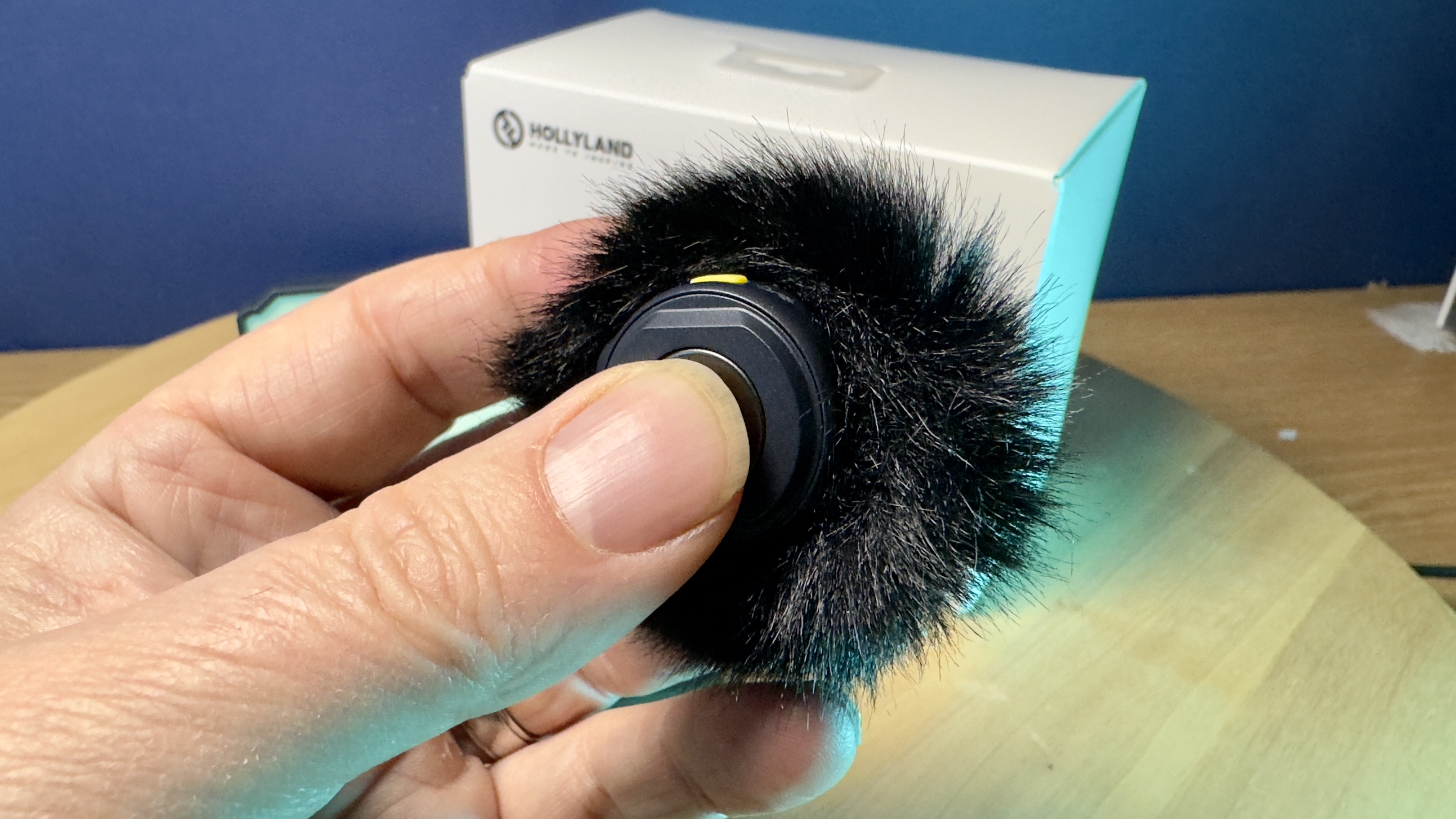
My test location was quite windy so I popped the button mic into the supplied windshield and the rumble of wind noise was averted. I also took the windshield off and pressed the yellow button on the mic to activate its noise reduction software. I was impressed that the green noise reduction light appeared on the other transmitter mic too, so both employed noise reduction at the same time.
What was really cool is that by pressing the yellow button twice I could remotely trigger my iPhone to start recording (and then stop it with another double press). This start/stop recording trick worked in the iPhone’s native Camera app. This cool feature made me feel like James Bond as I could start a secret voice recording with a discrete double tap of a button on a discrete button-shaped mic!
Hollyland Lark M2: Final Verdict
The Lark M2 Combo Kit has something for everyone. As it ships with a USB-C receiver I can pop it into my iPhone 15 Pro Max (and this will also plug into an Android smartphone). The additional Lighting receiver means I can use it for recording B-roll on my iPhone 14 Pro. Different versions of the kit are available so you don’t have to spend extra for the Combo Kit if you just want a Lightning, USB-C, or camera version of the Lark M2.
The lack of cable on the tiny smartphone receivers means you can record audio straight to your gimbal-mounted smartphones, so the Lark M2 should be attractive to those who like to shoot action on the move while simultaneously recording high-quality sound. So if these features sound useful then you should certainly buy the Lark M2.
My only criticism is that the mini magnets could get lost on a location shoot when the subject unclips them from the mic, so if you’re a ‘butterfingers’ like me then you might want something with a traditional lavalier spring clip.
On the plus side, the magnets are very strong so that the attached mic won’t fall off during normal use. In fact, it was a challenge to photograph all the magnets separately as they kept flying towards each other, even when separated by a few centimeters! It looked like I had a poltergeist in my studio!
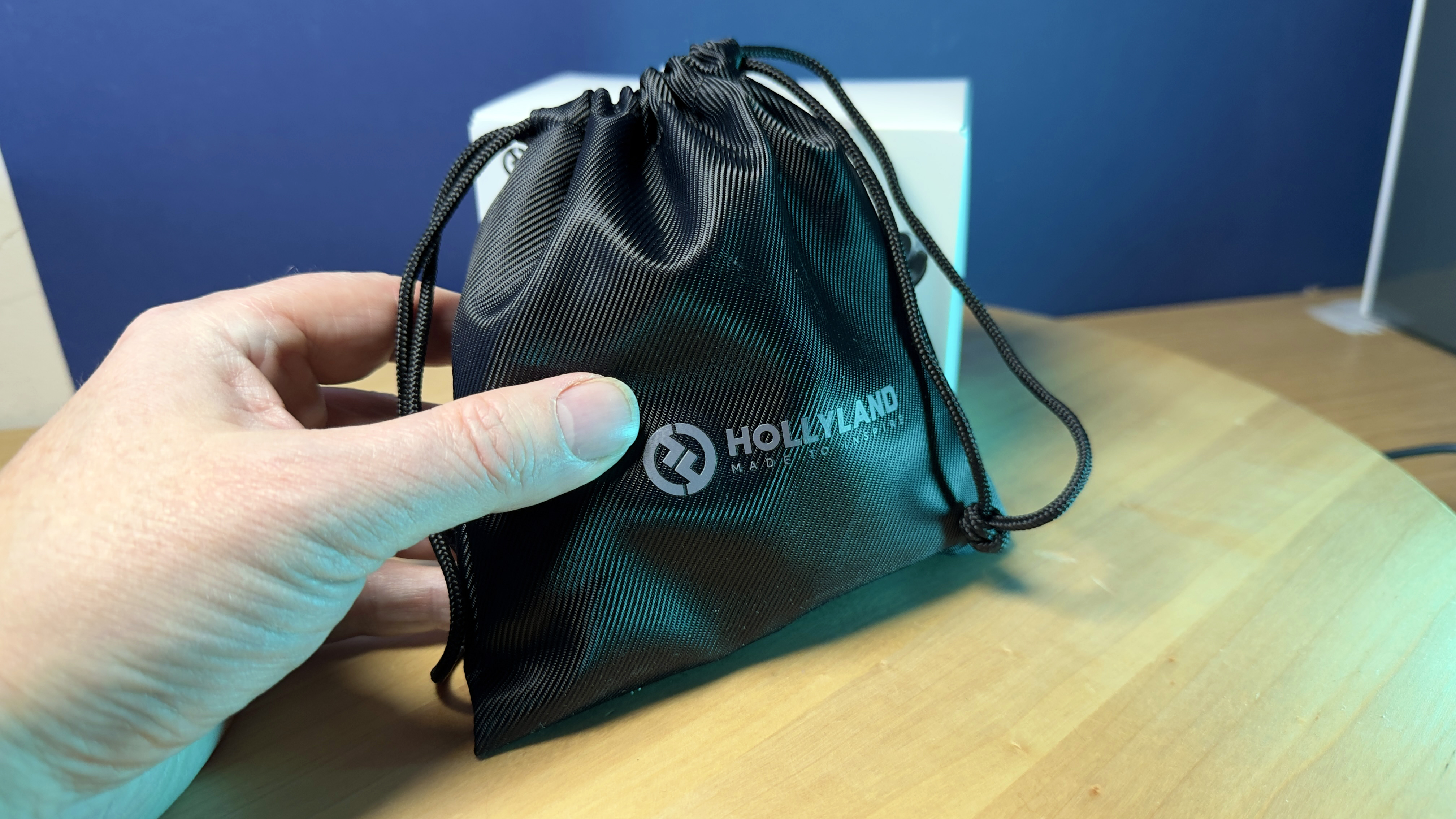
Alternatives
The beauty of the Lark M2 is that the mini receivers plug straight into your smartphone’s USB-C or Lightning port, alleviating the need for dangling cables. The DJI Mic also ships with Lighting and USB-C adaptors that slide onto its receiver, so it is also very compatible with smartphones. However, the DJI Mic’s transmitter is larger than the Lark M2’s so it isn’t as gimbal-friendly as the Lark M2. You might also want to consider the older Lark C1 kit that is designed specifically for smartphone users.
George has been freelancing as a photo fixing and creative tutorial writer since 2002, working for award winning titles such as Digital Camera, PhotoPlus, N-Photo and Practical Photoshop. He's expert in communicating the ins and outs of Photoshop and Lightroom, as well as producing video production tutorials on Final Cut Pro and iMovie for magazines such as iCreate and Mac Format. He also produces regular and exclusive Photoshop CC tutorials for his YouTube channel.

